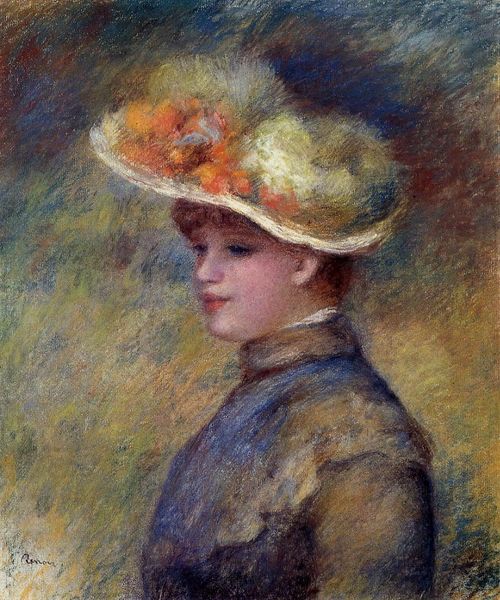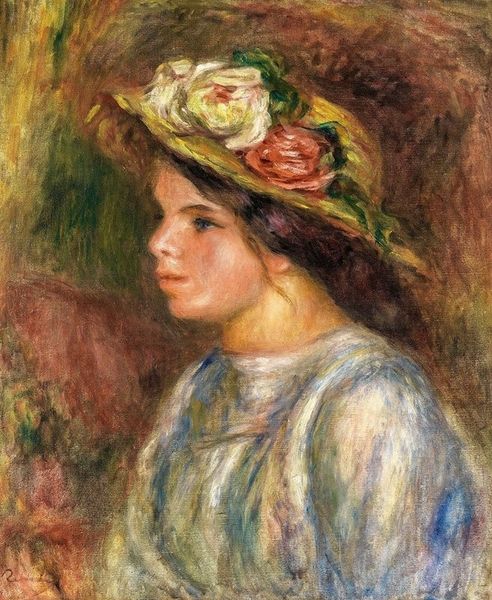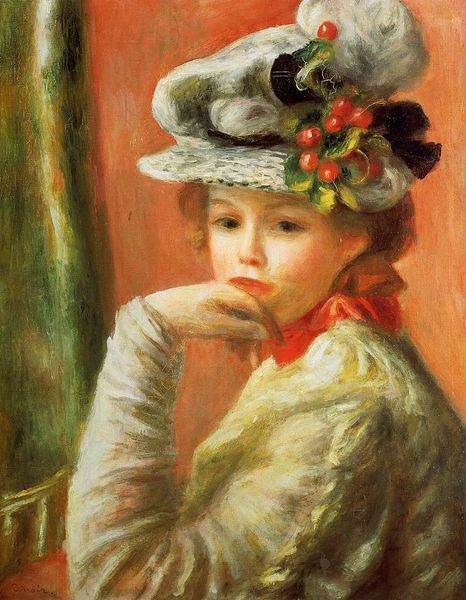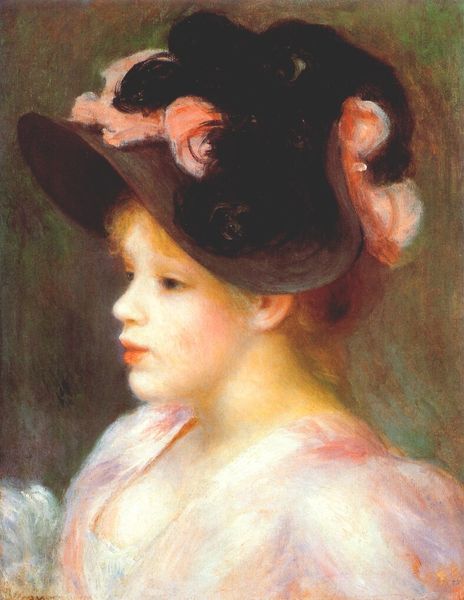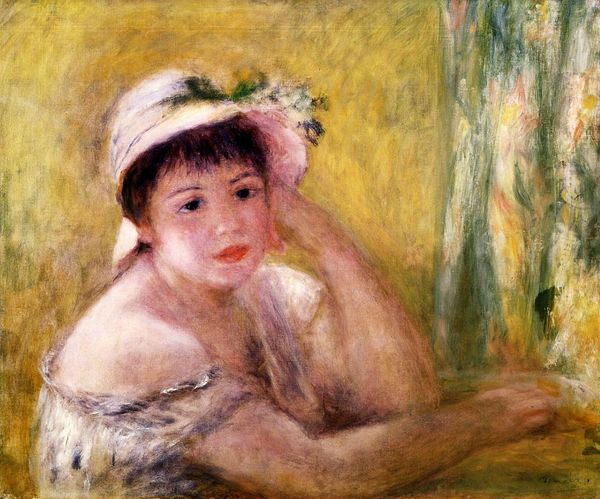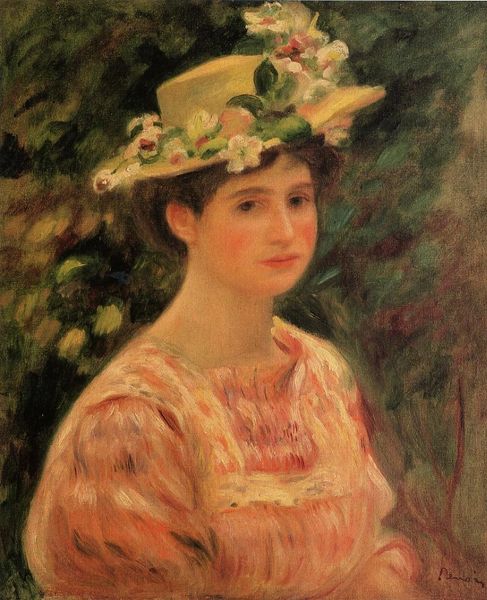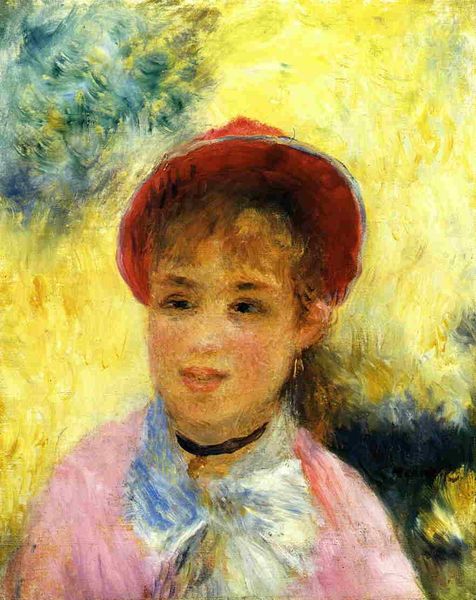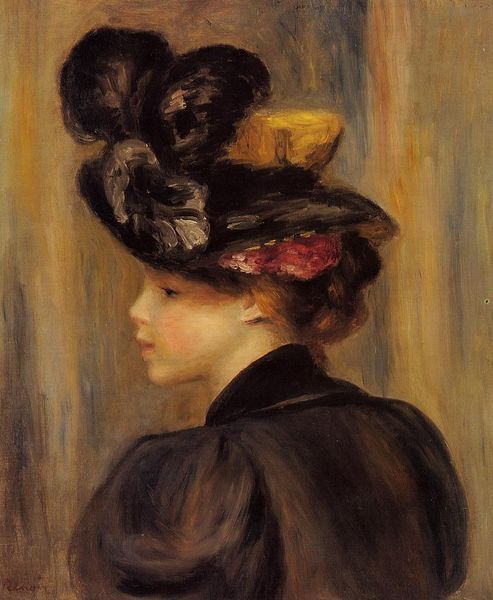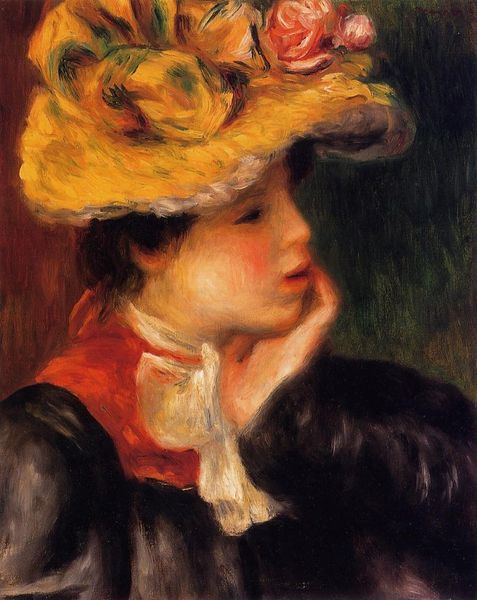
Copyright: Public domain
Curator: Painted by Pierre-Auguste Renoir in 1901, this is "Young Woman in a Straw Hat," currently held in a private collection. It is exemplary of Impressionist plein-air figuration in oil paint. What's your immediate response to it? Editor: There's a subdued sweetness to it, almost melancholic. The dark greens of the background set off the soft pinks and yellows of the woman's dress and hat. It feels like a captured moment of quiet contemplation. Curator: That introspection might be heightened by the downcast gaze, typical of this type of portraiture, drawing from symbolic conventions to suggest humility or inner thoughtfulness. How does the symbolism of a young woman in a landscape resonate today, given evolving discussions about gender and representation? Editor: Well, it begs the question, doesn't it, of agency? We see her framed passively in this natural setting. Was this her choice, her pose? What narrative control did she have? The 'straw hat' element, of course, references working-class aesthetics, hinting at social dynamics and possibly critiquing elite portrait traditions. But I feel troubled if it serves simply to aestheticize a young woman. Curator: An interesting perspective, although that is a style popular at the time. Also the choice of a hat, might hint toward her independence in that era. Let us dive into that a bit, this painting may reflect more of the historical expectations of women and the importance of portraiture in negotiating social status. The iconography shows a sense of romanticism, that may evoke certain feelings toward that demographic and era. Editor: But it is a romanticism constructed from a male gaze, isn't it? Can we truly separate that lens from our interpretation? I feel responsible for addressing how this artwork can unintentionally reinforce existing power dynamics in the art historical canon and that it needs that dialogue, specifically, even now. Curator: I would argue, though, that its enduring appeal lies in Renoir's ability to capture ephemeral beauty, using light and color to create a fleeting sense of human presence—elements that resonate across cultures and time. That ability also highlights humanity and perhaps innocence. I would say the impact comes more from that visual feeling of calm. Editor: Perhaps a blend, then. Acknowledging the contextual frameworks while also recognizing the emotional allure that keeps this painting engaging in complex modern discourse. That tension feels real. Curator: Precisely. A reminder that art acts as both a mirror and a window, reflecting societal values and aspirations—but also allowing us to peer into different eras and emotions.
Comments
No comments
Be the first to comment and join the conversation on the ultimate creative platform.
